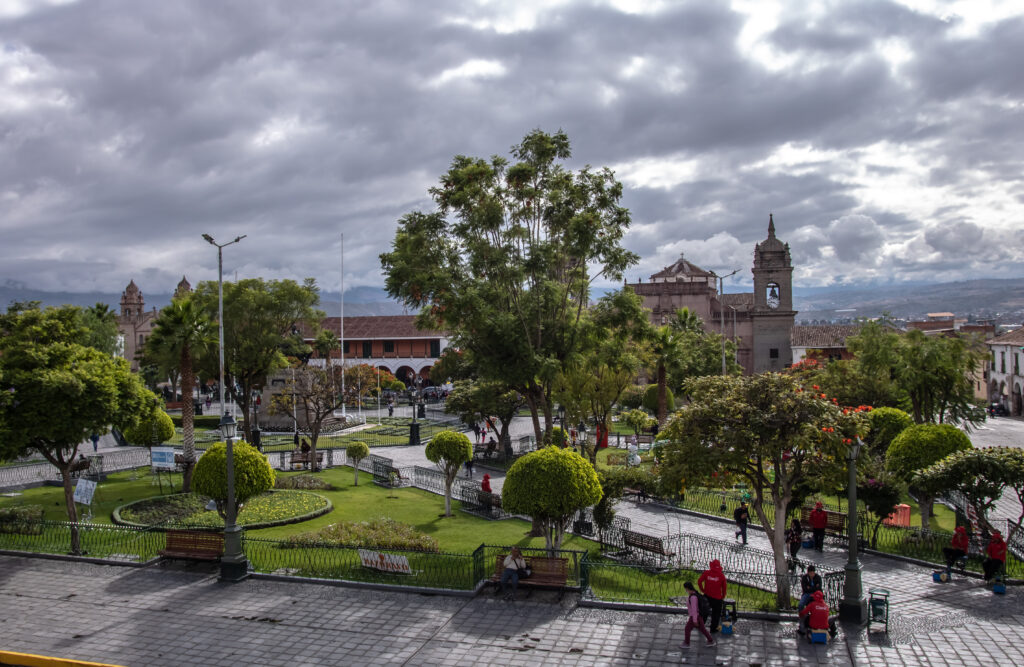Text: Ingrid Sanchez
Photos: Candy Sotomayor
According to the Secretary of Environment and Natural Resources "Semarnat", the eye of the hurricane is a sector of certain calm and cloudy bands in the form of a spiral with strong rainy activity that converge towards its center in a cyclonic way. The weather description also works to understand the current political situation in Ayacucho, the center of last month's protest that has now entered a moment of tension but of a certain calm with storms around it.
On December 2, the Ayacucho People's Defense Front ?FREDEPA?, the main and largest organization in the region, agreed to join the mobilization that has been called for January 4 with a demonstration to be held at the afternoon next Wednesday.

This, unlike the decision of the Macrosur Assembly, which was made up of the Puno region and some sectors of Arequipa, Tacna, Moquegua, Madre de Dios, Ica, Cusco and Apurímac, and which currently calls for a total strike throughout the country.
The discussion, tense at times, included leaders of the region's mass organizations such as sectors of transporters, teachers and some businessmen who opposed the strike, and people who individually came to argue in favor of the strike.
The heated spirits, the demand of the bases to the government of Dina Boluarte and the somber looks of the relatives of the victims of the repression of December 15 that left 10 people dead, were the common denominator of an assembly that was open but that, according to the Executive Committee of FREDEPA, it had "ternas", as they colloquially call plainclothes policemen who infiltrate mobilizations or meetings to carry out intelligence work.

“We know that there is a presence of shortlists here, but we tell them to be calm, not to make a mess and not to take photos or record. If we find out that they are doing it or causing disorder, we are going to evict them," the president of FREDEPA, Rocío Leandro Melgar, firmly stated shortly before starting the assembly.
The tension has been growing in recent days as the end of the truce that the social mobilization agreed for the December holidays approaches. The decision to stop the demonstrations was not the product of fatigue or exhaustion, but rather of the consideration of rebuilding the situation: care for the injured, organize the families of the fatalities, and recover financially because in Ayacucho, around 70 percent of the population is dedicated to commerce and services, according to FREDEPA itself.
The entire country has had its eyes on Ayacucho due to the importance that the strike had in the region on December 15 when hundreds of people went out to demonstrate in the Plaza Mayor and later went to the airport to try to block the exit of the military. who were heading to other regions of southern Peru. The demonstration ended with the persecution that the military made of the demonstrators even among the neighboring colonies where it is still possible to see the holes left by the bullets in the walls.

In this context and according to statements by Leandro Melgar herself, the regions of Apurímac, Cusco, Puno and Arequipa anxiously awaited the resolution of Ayacucho in relation to the January 4 strike. In addition, a national assembly of regions has been convened in Lima for next January 7 where the discussion on the path that the mobilization should take will continue.
«Of the 17 leaders, compañeros, only 3 have proposed that a strike be carried out, only 3. If we do not have the participation and approval of the transport compañeros, of the compañeros from the markets, we are not going to guarantee a strike as such. . That is delusional, comrades, we cannot guarantee and it would be irresponsible. You have to be objective”, argued the vice president of FREDEPA, Estefany Alanya.
The decision not to join the strike on January 4, but to call a mobilization in the afternoon, was accepted with sighs of relief by the union leaders who informed that they could not join the strike. The measure responds to an encouragement, on the part of the leaders and the Executive Committee of FREDEPA, to accumulate forces, before launching fully into a decision such as an indefinite strike.
However, independent activists and small collectives expressed their outrage at the decision.
"We do not agree with the decision because Ayacucho is going to be left behind but hey, we will work so that the mobilization comes out strong on Wednesday," said a teacher from the Unitary Union of Workers in Education ?SUTE? from Ayacucho.
The demands to call the national demonstration are still diverse and with different levels of support, but they come together around a certain common agenda: the call for a Constituent Assembly to draft a new Constitution, the departure of all congressmen and the advancement of elections for 2023. There are also sectors that continue to demand the departure of the government of Dina Boluarte and the freedom of Pedro Castillo.
With tension, uncertainty and expectation, the country looks towards the Peruvian south: in the mountains and in the jungle stormy clouds of discontent are brewing.

This article was produced with the support of the organization Global Exchange in collaboration with Peninsula 360 Press.
You may be interested in: Peruvians are mobilized in Mexico; They demand justice for the 28 murdered




